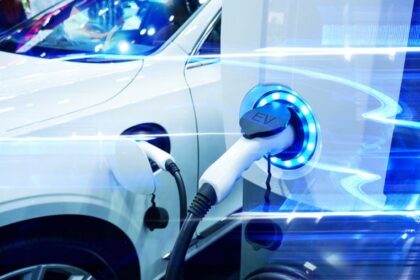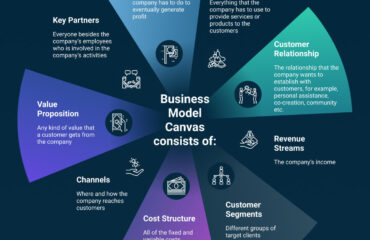
The Indian government is on a huge push to convert at least 30% of all vehicles sold in the country to be electric vehicles by 2030.
This will start a huge process of Disruption of the automobile industry and its subsidiaries… Consider a small example; a Gasoline powered car has more than 2000 moving parts while an electric vehicle which does not have a clutch or gearbox or an emission pipe has about 20…With lower parts requirements the companies, which supply all the 2000 odd moving parts, will go out of business… With lesser moving parts the electric vehicles will need lower maintenance and will make the huge automobile service infrastructure redundant..
There are three main types of electric vehicles (EVs), classified by the degree that electricity is used as their energy source.
1.Battery Electric Vehicles (BEV)
Battery Electric Vehicles, also called BEVs, and more frequently called EVs, are fully electric vehicles with rechargeable batteries and no gasoline engine. Battery electric vehicles store electricity onboard with high-capacity battery packs. Their battery power is used to run the electric motor and all on-board electronics. BEV are classified as Level 1, Level 2, and Level 3 or DC fast charging.
BEV Models that can charge on DC Level 3 Fast Chargers
· Tesla Model 3
· BMW i3
· Chevy Bolt
· Chevy Spark
· Nissan LEAF
· Ford Focus Electric
· Hyundai Ioniq
· Karma Revera
· Kia Soul
· Mitsubishi i-MiEV
· Tesla Model S
· Tesla X
· Toyota Rav4
· Volkswagen e-Golf
2. Plug-in Hybrid Electric Vehicle (PHEV)
Plug-in Hybrid Electric Vehicles or PHEVs can recharge the battery through both regenerative braking and “plugging in” to an external source of electrical power. While “standard” hybrids can (at low speed) go about 1-2 miles before the gasoline engine turns on, PHEV models can go anywhere from 10-40 miles before their gas engines provide assistance.
PHEV Models are
· Chevy Volt
· Chrysler Pacifica
· Ford C-Max Energi
· Ford Fusion Energi
· Mercedes C350e
· Mercedes S550e
· Mercedes GLE550e
· Mini Cooper SE Countryman
· Audi A3 E-Tron
· BMW 330e
· BMW i8
· BMW X5 xdrive40e
· Fiat 500e
· Hyundai Sonata
· Kia Optima
· Porsche Cayenne S E-Hybrid
· Porsche Panamera S E-hybrid
· Toyota Prius
· Volvo XC90 T8
3. Hybrid Electric Vehicles (HEV)
HEVs are powered by both gasoline and electricity. The electric energy is generated by the car’s own braking system to recharge the battery. This is called ‘regenerative braking’, a process where the electric motor helps to slow the vehicle and uses some of the energy normally converted to heat by the brakes. HEVs start off using the electric motor, then the gasoline engine cuts in as load or speed rises. The two motors are controlled by an internal computer, which ensures the best economy for the driving conditions.
HEV Models are
· Toyota Prius Hybrid
· Honda Civic Hybrid
· Toyota Camry Hybrid
However, there are some major challenges that will impede the growth of Electric Vehicles in India…
1. Price with respect to similar Gasoline Models
The Hyundai Kona electric is priced at Rs 25.30 lakh, while a comparable product, the Hyundai Creta, costs Rs 12-15 lakh for the petrol version. Similarly, the Tata Tigor EV starts at Rs 9.9 lakh as compared to Rs 5.5 lakh for the petrol version. The Electric WagonR may cost as much as Rs 12 lakh, compared to the Rs 4.20-Rs 5.70 lakh (ex-showroom, Delhi) for its petrol version.
2. Battery capabilities and the materials used to make these batteries
The most critical part of the EV is the battery. What the internal combustion engine is to a petrol car, the battery is to EV. Currently, all EVs use lithium-ion batteries (LIBs). It is the limitations of LIBs that will prevent widespread adoption of EVs.
LIBs are expensive and do not support long distance travel. The battery used in a typical EV is a massive 500 kg pack consisting of hundreds of large lithium-ion cells that use metals like lithium, cobalt, nickel and manganese. Each metal serves a useful purpose. For example, lithium generates a flow of electrons and helps charge the battery. Cobalt prevents battery overheating. The problem is the world does not have enough of lithium or cobalt reserves needed to replace current automobiles with EVs.
Worse, most reserves are located in a few countries. So, 65% of lithium reserves are in Bolivia and Chile, while 60% of cobalt reserves are in Congo. Short supply has made both expensive. No wonder the battery accounts for 70% of the cost of two-wheelers and 50% of cars.
Many firms Panasonic, Tesla, Toyota and Chinese manufacturers are experimenting with sulphur, sodium and magnesium to replace cobalt.
Use of fuel cells is another big idea. Fuel cell EVs powered by hydrogen emit only water vapour and warm air. A significant challenge is to bring down the cost. General Motors and Airbus are part of the global Hydrogen Council, which plans to push a transition to fuel cells
3. Battery charging Infrastructure
Assuming a moderate level of adoption, India needs about $6 billion for charging infrastructure,
In countries such as Norway, a majority of the charging stations are located on the premises of a conventional fuel station. In India, this would not be possible at most fuel pumps, since the infrastructure is typically cramped into a tight plot of land
What would also be needed is a combination of regular charging ports (typically at homes, offices) alongside fast-charging options (at supermarkets and along highways.
4. Range anxiety
The fear of being left stranded due to an exhausted battery — known as ‘range anxiety’ — is a key reason that desists buyers from purchasing an EV. The other is worry that an EV’s battery would degrade over time.
Consider for example:
The Hyundai Kona claims to be able to cover 452 km on full charge under ARAI (Automotive Research Association of India) test conditions. Going by this, one can drive from Delhi to Amritsar on a single charge with the Kona. In real road conditions (during tests in the EU), this battery achieved a range of 289 km — roughly Delhi to Kasauli — on a single charge.
Mass-market cars such as the Tata Tigor EV or the Mahindra eVerito have a more modest range — about 100 km in road conditions.
India has around 180 million two-wheelers. Assuming that each of these uses a little over half a litre of petrol per day, or about 200 litres per year, it works out to around 36 billion litres. At Rs 72 per litre, this would cost about Rs 2.6 lakh crore. On a conservative assumption that 50% of this is imported crude, there is a possibility of saving Rs 1.3 lakh crore worth of imported oil.
In countries like Norway that are pushing EV in a big way, 99% of the electricity comes from clean hydro power…But in India, over 70% of the electricity generation is coal-fired and hence in the present set up it power used to charge the electric vehicles would still be majorly charged by electricity produced from hydro carbon based fuels.
As such, the EV push will only be driving lesser consumption of petrol and diesel but more consumption of coal, which really does not serve the purpose of the huge adoption drive for EVs.
So, until these issues are really addressed the original purpose of driving usage of more EV will not be met at all…



